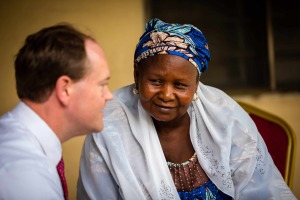Study Shows Gay, Bisexual Teens More Prone to Risky Behavior
Gay and bisexual high school students are more likely than their heterosexual peers to use tobacco, alcohol, drugs and violence and to even have suicidal tendencies, a new study by the U.S. government has found.
Anonymous surveys of 156,000 high school students found that gays, lesbians and bisexuals were more likely to engage in unhealthy risk behaviors than heterosexual students, the Atlanta-based Center for Disease Control and Prevention said Monday.
The federal government’s first analysis of teen sexuality and risk behavior of this magnitude, the survey was conducted in six large urban school districts in seven states. The students surveyed were asked about risky behaviors of various kinds, including the use of heroin, throwing up to lose weight, unprotected sex, drunk driving, use of seatbelts and helmets, and possession of a gun.
The CDC report seeks to link the tendency among gay and bisexual teens to engage in risk behaviors to their sense of societal rejection.
Howell Wechsler, director of CDC’s Division of Adolescent and School Health, noted that communities need to do a “much better job of supporting these young people.” Wechsler suggested that efforts to promote adolescent health and safety must take into account “the additional stressors these youth experience because of their sexual orientation, such as stigma, discrimination, and victimization.”
“For youth to thrive in their schools and communities, they need to feel socially, emotionally, and physically safe and supported,” said Laura Kann, chief of Surveillance and Evaluation Research Branch, DASH.
CDC’s analysis is based on data from Youth Risk Behavior Surveys conducted during 2001–2009 in seven states – Connecticut, Delaware, Maine, Massachusetts, Rhode Island, Vermont, and Wisconsin – and six large urban school districts – Boston, Chicago, Milwaukee, New York City, San Diego, and San Francisco.
The surveys included students who merely reported their sexual orientation as well as those who indicated they had been sexually active.
The study found that gay or lesbian students had higher prevalence rates for 49 percent to 90 percent of all health risks measured. Similarly, bisexual students had higher prevalence rates for 57 percent to 86 percent.
For instance, the survey found that the prevalence of having felt so sad or hopeless that they stopped doing some usual activities almost every day for two or more weeks in a row during the 12 months before the survey, ranged from 47.2 percent to 62.9 percent among bisexual students and from 28.8 percent to 52.8 percent among gay or lesbian students, as compared to the 19.3 percent to 29 percent range among heterosexual students.
Similarly, the prevalence of having seriously considered attempting suicide ranged from 35.4 percent to 46.2 percent among bisexual students and from 18.8 percent to 43.4 percent among gay or lesbian students, as compared to the 9.9 percent to 13.2 percent range among heterosexual students.
Evangelical Christians have been reaching out with more compassion to the gay community. While standing firm on their beliefs that homosexuality is a sin, more churches and groups have been making efforts to offer both grace and truth to those struggling with same-sex desires.
Exodus International, which claims to be the largest worldwide ministry to those struggling with unwanted same-sex attraction, is holding its 36th annual conference beginning Wednesday in Asheville, N.C., to equip Christians on how to respond and minister to those who have homosexual desires. The group’s main mission is to point people to Christ and allow Christ to “fill the wounded, broken and empty places that contribute to all kinds of sinful behavior.”
“At Exodus we wholeheartedly believe that God's grace is sufficient to cover and heal any area of brokenness,” said Alan Chambers, president of Exodus International.





























